A Day with Chiara Lungarotti
A Day with Chiara Lungarotti
(January 10, 2010)
Gambero Rosso " ...Lungarotti wines... have reacquired the timeless allure that has earned this Torgiano estate a place among the most prestigious winemaking houses in Italy and indeed the world."
d restaurant Le Tre Vaselle. I can still remember the 1973 and 1975 Rubesco Riserva that I drank there back in1981.
Chiara is the CEO of Cantine Georgio Lungarotti and directs the company with her sister Teresa Severini Lungarotti It was founded in the early 1960’s by their father, the legendary Georigo Lungarotti. When Georgio Lungarotti died they became the first women to run a major winery in Italy.
I was in Montefalco for La Classificazione del Montefalco Sagrantino DOCG conference and since I was free on Saturday, I wrote to Cantina Lungarotti asking if I could visit. I was told the winery was closed on Saturday, but Chiara said she would only be too happy to meet with me. However she had been traveling a lot and would have to take her 2 and a half year old son along. His name is Giovanni but Chiara called him by his nickname, Mimmo, and he had missed his mother.
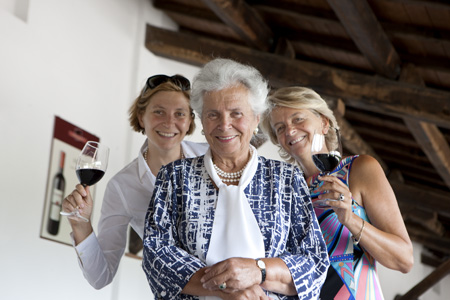 |
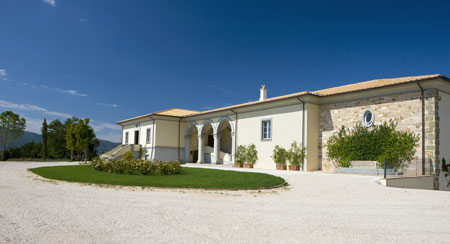 |
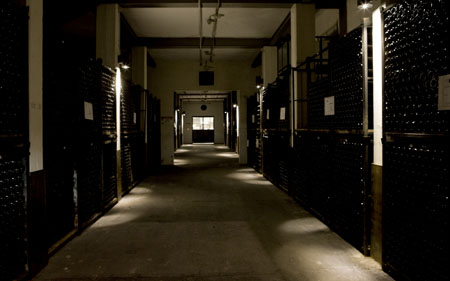 |
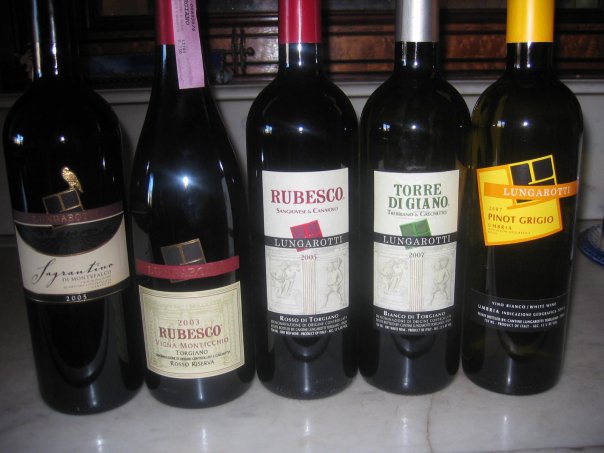 |
 |
 |
As we drove from the hotel to the winery we spoke about the new winery in Montefalco. Chiara said that her father, Georgio Lungarotti, was interested in and had a passion for all things Umbrian. He was very active in getting the DOC for Sagrantino.
I mentioned that producers from Toscana, Trentino, Friuli-Venezia-Giulia and other parts of Italy were coming to the area to make Sagrantino. She replied that these people were not from Umbria and did not understand it like her family did. Montefalco was only a half hour from Torgiano and her family wanted to start another winery there and no place else. They looked for a long time to find the perfect spot to grow the grapes.
You cannot plant grapes just anyway and expect to get good results, she said. They contacted a local man from Montefalco who had been supplying them with olive oil for over 20 years to see if he knew any places for sale. After some time he told Chiara that the land next to his was for sale and he believed it was one of the best locations in the area for growing grapes. Chiara agreed and they acquired the land.
Chiara then gave me a lesson on setting up a winery. She started with the topography of the land, going back to prehistoric times. We talked about, the soil, climate, and rainfall, the best clones, the number of vines per hectare and what was the best method to train the vines, and everything else that would affect the grapes. In the vineyard, she said, they use the most advanced viticultural techniques. Wine density and row spacing are optimized so as to guarantee the highest possible grape quality. We also discussed the Sagrantino grape and how difficult it is to work with in order to get the correct balance between tannin and fruit.
On the way from Montefalco to Torgiano I told Chiara that some of the other producers I visited who produced Sagrantino were certified organic by the EU. Chaira believed this was a bit much. She said that they had a long tradition of environmental awareness. In fact Lungarotti was chosen to be part of the Biomass Project because of their attention to the environment and to preserving the land. This Project is a collaboration between the Lungarotti winery in Torgiano and Perugia University’s biomass research center. The Project is trying to recover energy from vineyard pruning by-products, and then use this energy in the winery, therefore transforming a disposal problem into an asset. As we drove around the estate Chiara very proudly pointed out the number of trees they had planted over the years.
We went on a tour of the winery and spoke about how important it is to have a low temperature in the cellar. Chiara then explained the process for making their brut spumante and that they use the classical method the same as they do in champagne. Then we went to the part of the cellar that was the most interesting to me -where they keep the older reserve wines. There were bottles of Rubesco Riserva going back to the 1960’s. They did not have any bottles left of the first vintage of their “Super Umbria” St. Georgio. They did not expect the first vintage 1977 to sell out but it did. I should of asked Chiara if any of the older vintages were for sale.
I tasted a number of wines from the most recent vintages and was very impressed by the quality. I started with the Pinot Grigio “Umbria IGT 2008 I00 % pinot grigio. It is made from the free run juice and vinified in stainless steel. This is a young fresh fruity wine with good acidity and a little more body then most Pinot Grigios.
Lungarotti Brut from 50% chardonnay and 50% pinot noir. Fermentation takes place in the bottle according to what the Italians call the classical method and it is all done by hand. The second fermentation is for 36 months.
Torre Di Giano “Il Pino” Torgiano DOC-2008- made from 70% trebbiano and 30% grechetto. The wine spends time on the lees and 70% is aged in stainless steel and 30% in oak barrels but they are not all new. This is a very well balanced wine with good fruit and Chiara is a big believer in both the trebbiano gape and the grechetto grape.
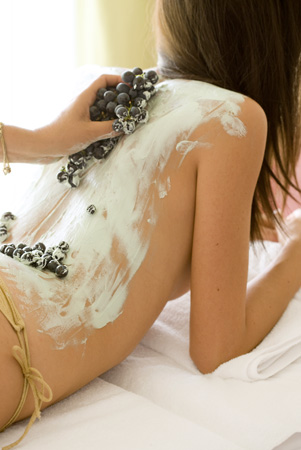
Chardonnay Umbria IGT 2006- 90% chardonnay and 10% grechetto. Chiara said that the grechetto added a little extra to the chardonnay. The wine is fermented in oak barrels but was fresh and fruity with good acidity. One of the better Italian chardonnays I have tasted in a long time. Maybe it was the grechetto?
Rubesco Rosso di Torgiano DOC made from 70% sangiovese and 30% canaiolo. It is fermented in stainless steel and aged 10-12 months in oak casks. It is a wine that goes well with food because of the good acidity and red fruit flavors. I believe that it is one of the best buys in Italian red wine.
Rubesco Riserva Vigna Minticchio Torgiano Rosso Riserva DOCG 2005 made from 70% sangiovese and 30% canaiolo. The same grapes and the same percentage as when it was first made in the1960’s. Fermentation takes place in stainless steel with maceration on the skins from 15-20 days and is aged in barriques for 12 months. It had hints of cherries and blackberries and a touch of balsamic. It was aged for ten years before it was released but now it is released after five. The first vintage that I had was the 1973. I visited the winery in 1981 and stayed in their charming hotel Le Tre Vaselle and had lunch in their excellent restaurant where I also drank the 1975. This wine can last for 30 years. The 2005 got the highest ratings from the five top Italian wine publications. I was lucky enough to drink the 1973 and 1977 few years ago and both were great. This wine would be on my top ten Italian red wines of all time.
San Giorgio Umbria Rosso IGT 50% cabernet sauvignon, 40% sangiovese and 10% canaiolo. Fermentation in stainless steel with maceration on the skins for 15-20 days and is aged in barriques for 12 months.It is released after 4-5 years. Chiara calls this her “Super Umbria “wine. It was well balanced with hints of blueberry and plum. The finish was long with a very pleasant aftertaste.
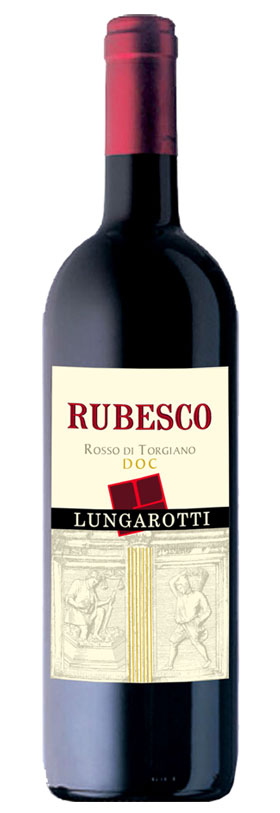
Sagrantino di Montefalco DOCG 2005 100% sagrantino. Fermentation takes place in stainless steel with maceration on the skins for 28 days and aged in barriques for 12 months.They have gotten the correct balance between tannin and fruit. There was enough black fruit with a hint of blackberry jam to carry the wine. The winery in Montefalco is new and I have only tasted this wine and the 2003 but if these are any indication they made the right move to Montefalco. These will be long lasting wines.
Sitting in the dining room at Le Tre Vasalle having lunch with Chiara and Mimmo I wondered how Chiara manages to do all that she does and take care of a very active 2 plus year old boy. In addition to her responsibilities at the winery, Chiara is national chairman of the Wine Tourism Movement, advisor to Federvini, vice president of Women of Wine and is involved in many other cultural and wine activities. I asked how did she manage to do so much and all she did was smile, but you can hear the pride in her voice when she speaks of Umbria and the passion when she speaks of wine.
If you go to Umbria, a visit to Torgiano is well worth the trip. There is the winery, the wine museum, the olive and olive oil museum and Le Tre Vaselle, the hotel in which to stay. The restaurant is excellent and of course there is the wine. Today they have all the amenities one would expect from an award winning hotel, including a spa called Bella Uve. It is the first spa in Italy for wine therapy.
The winery and hotel complex includes a wine museum in Torgiano, a private collection of objects that span 5000 years of wine history. On my first visit, the museum was very small and in order to enter it you had to ring the door bell of the woman that lived upstairs and she would come down and let you in. Now the museum has grown to some twenty rooms and includes an olive and olive oil museum.
Over the course of 30 years, every visit to Le Tre Vaselle has been memorable for meand my day spent with Chiara and Mimmo was no exception.
Related Links
This work may not be reproduced, in whole or in part, without prior written permission.
Questo lavoro non può essere riprodotto, in tutto o in parte, senza permesso scritto.



